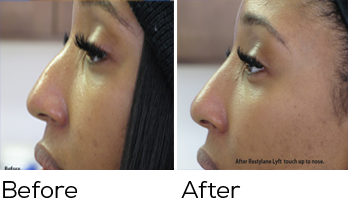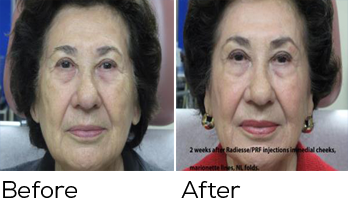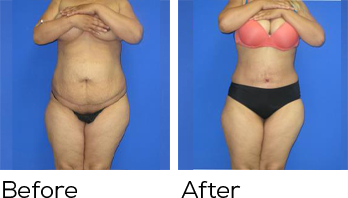Labioplasty or Vaginal Rejuvenation procedures have grown much more popular over the last decade.B Fueled in part by media coverage, more patients are requesting the procedure.B Different specialties have been performing the procedure and using different techniques to trim the labia minora.
Techniques used to reduce the labia include wedge-excision, either centrally or inferiorlyB and complex W or Z-plasty closures.B B I prefer the an elliptical direct excision since one can get a greater reduction with this technique and there is less chance of the incision coming apart when aB greater excision is desired.B Another benefit of this procedure is that the hyper-pigmented areas of the labia can be removed with the the direct excision and the edges will be regular after it heals.
As a female clinician I also look at the external genitalia as a whole and see what else needs to be done to rejuvenate the area.B Some patients have very redundant labia majoras and need either volume replacement or direct excision of the skin to make it look more youthful and less saggy.B My volume replacement of choice is fat.B I will typically graft 5-10cc of fat in either labia majora depending on the size of the area and the amount of volume deficiency.B Fat grafted in this area typically has long longevity.
When I do a labia majora reduction, I usually perform an elliptical incision of the excess skin from the clitoris to the fourchette.B This incision heals very well is is barley visible.B Scars will heal better in areas where there are hair follicles.
The clitoral hood is the skinB on the side of the clitorusB that attaches alongB the top of the labia minora.B There could be redundant skin here and the area does not look proportional, and too bulky if this is not reduced when a labioplasty reduction of the labia minora is performed.B I typically will reduce this area if it if too redundant at the time of the labioplasty procedure.
I often ask patients how much of the labia minora they want reduced.B If they want most of the labia reduced, this is taken down to the labial crease or the junction between the labia minora and majora.B This will remove all the darkened labia and it will lie inside the labia majora.B This look as been referred as the b Barbie Lookb by patients.1B Patients can also have less labia removed but most want it inside the labia majora.B B When a patient stands and looks down, they will not see their labia minora and most feel this gives them the sleekest most youthful look.
I typically perform these procedures with local anesthesia and mild IV sedation.B I have not seen any major complications and most of the complications reported in the literature and ones that I have seen in my practice are mild.B These include suture dehiscence and discharge from the sutures.B Yeast infections and bladder infections can occur.B Nerve injury or nerve pain are not common.B There is usually no change in ability to orgasm and painful intercourse from traction from enlarged labia is usually eliminated.B About 2% of patients in this study wished they had a less aggressive resection of the labia.1B
Most studies report a patient satisfaction between 94 to 100%.B B Most studies report low revision rates around 3-5%.B Most patients take pain medication for 1-2 weeks and most heal by 4-6 weeks.
In conclusion, the labioplasty procedure is a safe procedure that is becoming more popular and is requested by normal women of all ages that has a high satisfaction rate.
References
- Alinsod, R. Precision of Labia Minoraplasty:an Update on the Barbie Look. Presentation at the 2015 IMCAB World Congress Meeting in Paris.



